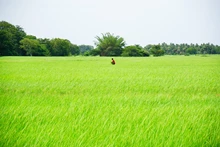
Fruit growers in Fukushima are passionate about cultivating new fruit varieties. Cherries are the first fruits harvested in Fukushima in early summer. In the summer, the most popular fruits are peach, pear, grapes, and apple. Processed 'Ampo Persimmon' is produced in the winter, and fruits are produced all year.
The Fruit Kingdom is the name given to Fukushima. The popular fruit is known as "Shine Muscat," and it is regarded as the saviour of the Japanese grape industry. It is a grape that can be eaten with the skin and is enjoyed by people of all ages.
Shine Muscat production is increasing now, according to Seiichi Kazumata, a Fukushima Future Agricultural Cooperative Association official. According to Mitsunori Narawa, a Grape Farmer, a parent, Shine Muscat, is currently engaged in selective breeding of grapes. "A variety of red and black grapes are grown. If seedless grapes are grown, the skin can be eaten. There is a possibility that grapes can be produced and shipped all year round," said Mitsunori Narawa.
Furthermore, Fukushima pears are grown with improved cultivation methods. "This peach is known as Sakura-hakutou. It is harvested at the end of the year. 'Sakura-hakutou' is kept at room temperature for 3 to 4 days and softens when touched. That is the optimal time to eat. It's a peach that everyone will enjoy because of its high sugar content," said Hideyuki Ootsuki, a peach farmer.
"Since rice paddies cannot be built because there is no water in the land, people in old times set up waterworks facilities and started delivering water to fruits. 'Ouchi-jyuku' is a Japanese village with traditional houses. Since the Edo period, thatched roofs have been used, attracting many foreign tourists. Ouchi-specialty jyuku's is 'Negi soba,' a type of noodle. Fukushima's flavour satisfies visitors' desire to eat green onion and noodles."
Autumn leaves and thatched roofs are well-known in Japan, and the scenery is breathtaking. It receives heavy snowfall during the winter, transforming the entire village into a fantastic landscape. It has been 11 years since an earthquake struck eastern Japan. Fukushima has recovered and begun to attract tourists and foreigners.











